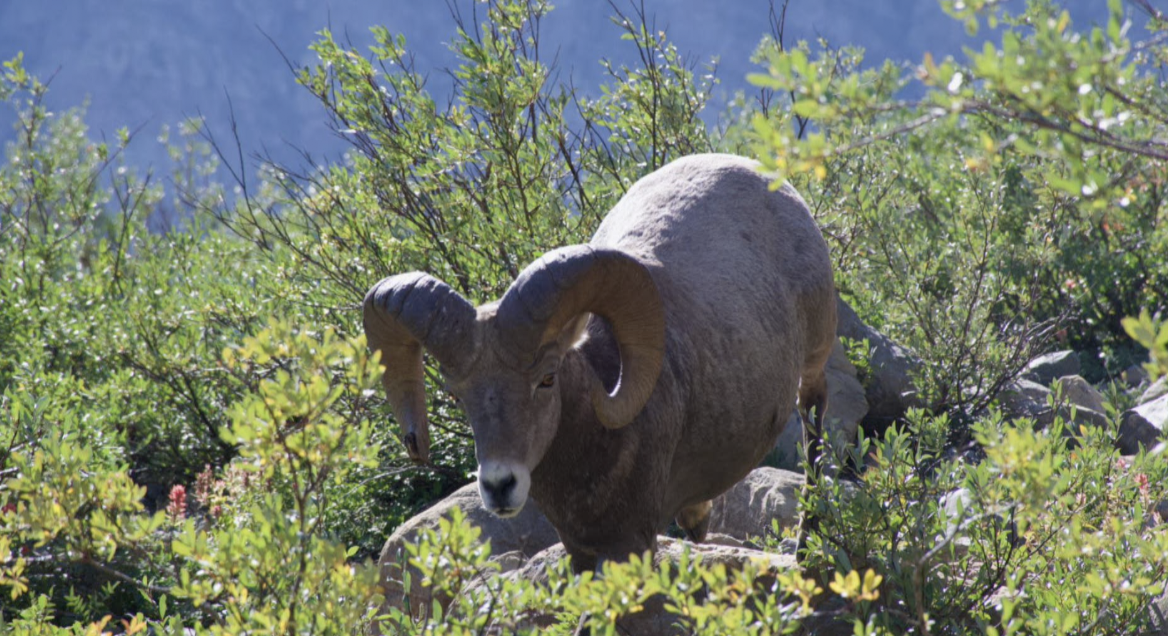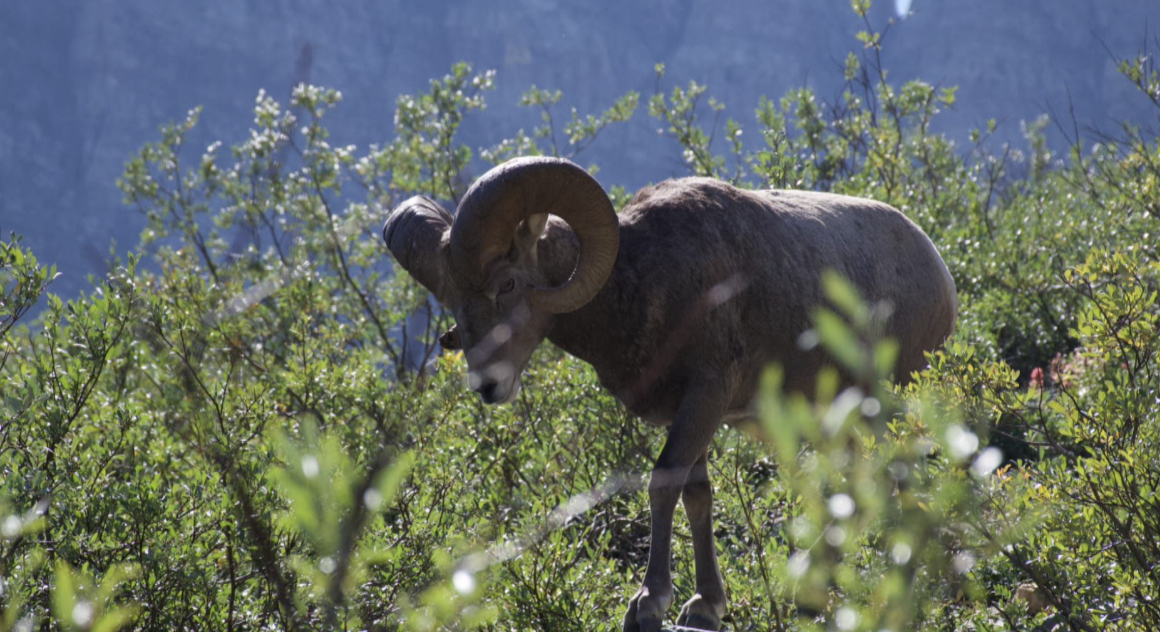WEST GLACIER - Volunteers are working alongside a biologist from the University of Memphis to identify, classify, and record the behavior of bighorn sheep in Glacier National Park.
The study aims to test whether day-to-day citizens or “community scientists” can study animal behavior and improve disease surveillance across wildlife areas in North America.
Spotting scopes and binoculars are two important tools when studying bighorn sheep behavior.
“I’ve certainly have used binoculars but have never had the opportunity to use scopes or actually look at them in that detail that a scientific eye would see,” said bighorn sheep study citizen scientist Julie Sanderude.
Sanderude, from Whitefish, jumped at the opportunity to participate in the bighorn sheep study, having loved the animal since she was a young child.
“We were on the Hi-Line when I was a kid and you got to see the bighorn sheep butting and it was like unbelievable…they’re just treasures of this area,” said Sanderude.

Julie is one of 55 citizen scientists working alongside University of Memphis Biologist Sidney Brenkus.
“We’re looking to see if citizen scientists can detect behavior at the same rate as a biologist,” said Brenkus.
Brenkus said community scientists sit next to a biologist and pick out the same sheep from a herd, studying behavior for 20 minutes at a time before comparing notes.
“How long is the animal laying down, walking, running, playing, interacting with each other, things like that,” added Brenkus.
She said this data goes a long way in comparing behaviors in healthy bighorn sheep to those infected with Bighorn Sheep Respiratory Disease.
“Signs like coughing, nasal congestion, so nasal discharge, drooping ears, you will see their ears go from up to down.”
She said the disease is destroying bighorn sheep populations across North America, leading to herd extinctions in certain areas in Montana.
“Even in the Bob Marshall Wilderness we went from thousands to hundreds,” said Brenkus.
Community scientists will hike anywhere from five to 15 miles a day with a team of biologists looking for bighorn sheep throughout the park.
“My wife and I are both ultra-distance runners so this is right in our wheelhouse,” said bighorn sheep study citizen scientist Richard Hildner.
Hildner traveled from Polebridge to participate in the study, he jumped at the chance to see the beauty of the park while providing valuable science.
“They’re an iconic species here in the park, and anything we can do to help, it’s a great way to spend a few days,” added Hildner.

Brenkus said the study runs through the beginning of October, with all behavior data being processed through a computer program to be thoroughly analyzed.
“So that we can see whether we’re able to send them out into the field eventually to collect this behavior data without a biologist next to them, but right now biologists are next to them at all times so we can do that comparison.”
She said the community response to the study has been overwhelming and speaks to the love of bighorn sheep across Montana.
“Maybe they’re used to watching their local herd somewhere else in Montana, and some people just love the animal, so they come out, I think that’s part of the reason we’ve had a lot of interest is just the charismatic bighorn sheep draws everybody’s interest,” said Brenkus.
Glacier National Park Conservancy donors provide nearly all funding for the park’s citizen science program. More information on the program can be found here.
Organizers report that all of the volunteer positions for the 2022 Bighorn Sheep Study in Glacier National Park have been filled.





